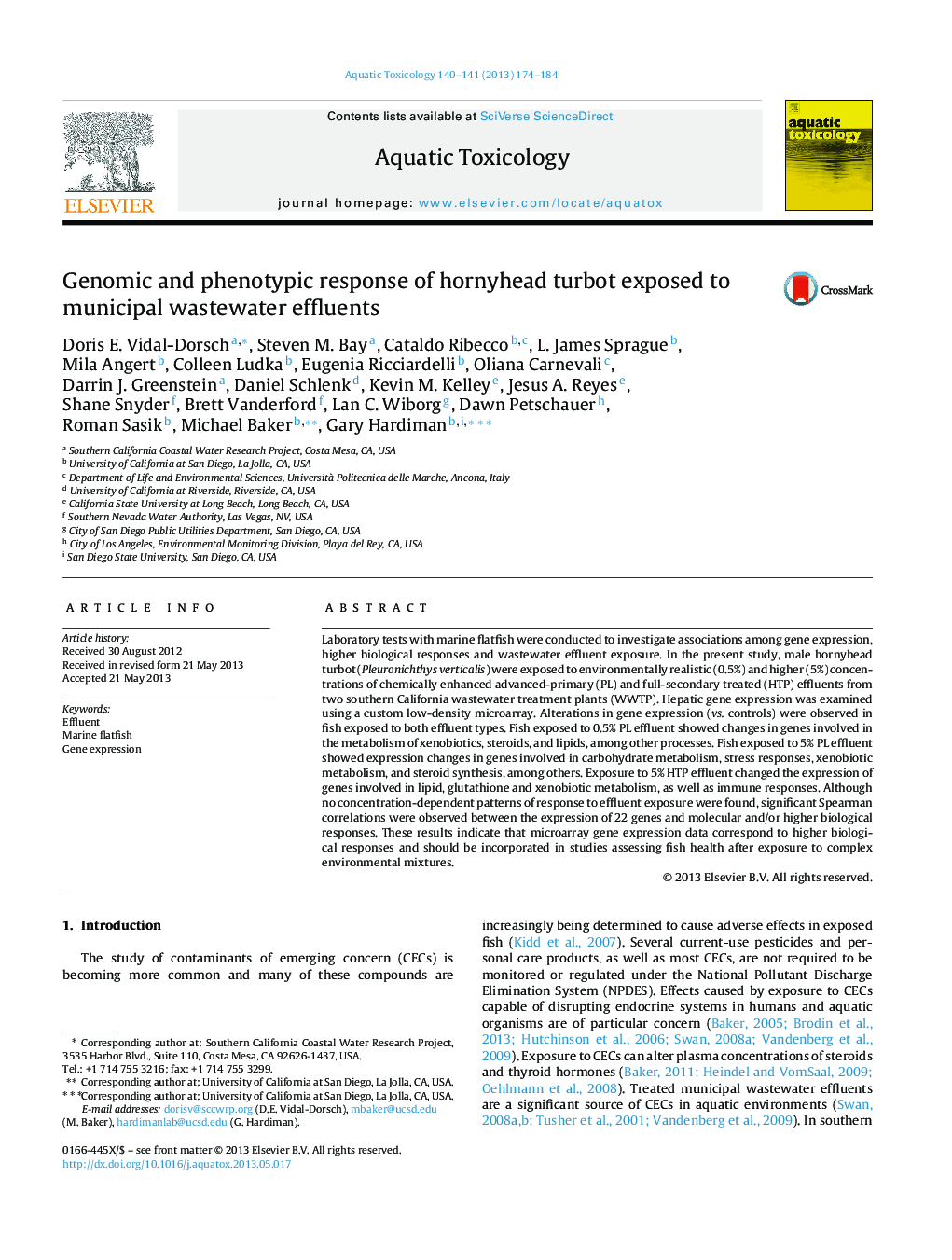| Article ID | Journal | Published Year | Pages | File Type |
|---|---|---|---|---|
| 6382506 | Aquatic Toxicology | 2013 | 11 Pages |
Abstract
Laboratory tests with marine flatfish were conducted to investigate associations among gene expression, higher biological responses and wastewater effluent exposure. In the present study, male hornyhead turbot (Pleuronichthys verticalis) were exposed to environmentally realistic (0.5%) and higher (5%) concentrations of chemically enhanced advanced-primary (PL) and full-secondary treated (HTP) effluents from two southern California wastewater treatment plants (WWTP). Hepatic gene expression was examined using a custom low-density microarray. Alterations in gene expression (vs. controls) were observed in fish exposed to both effluent types. Fish exposed to 0.5% PL effluent showed changes in genes involved in the metabolism of xenobiotics, steroids, and lipids, among other processes. Fish exposed to 5% PL effluent showed expression changes in genes involved in carbohydrate metabolism, stress responses, xenobiotic metabolism, and steroid synthesis, among others. Exposure to 5% HTP effluent changed the expression of genes involved in lipid, glutathione and xenobiotic metabolism, as well as immune responses. Although no concentration-dependent patterns of response to effluent exposure were found, significant Spearman correlations were observed between the expression of 22 genes and molecular and/or higher biological responses. These results indicate that microarray gene expression data correspond to higher biological responses and should be incorporated in studies assessing fish health after exposure to complex environmental mixtures.
Related Topics
Life Sciences
Agricultural and Biological Sciences
Aquatic Science
Authors
Doris E. Vidal-Dorsch, Steven M. Bay, Cataldo Ribecco, L. James Sprague, Mila Angert, Colleen Ludka, Eugenia Ricciardelli, Oliana Carnevali, Darrin J. Greenstein, Daniel Schlenk, Kevin M. Kelley, Jesus A. Reyes, Shane Snyder, Brett Vanderford,
